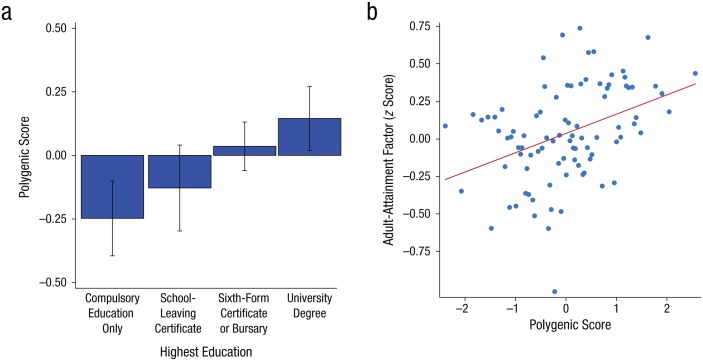Fig. 1.
Association between polygenic score and educational and adult achievement. In (a), mean polygenic score is graphed as a function of educational attainment. Error bars represent 95% confidence intervals. For the 1972–73 birth cohort we studied, compulsory education ended at age 15 years, at which point students could elect to take a School Leaving Certificate exam. Fifteen percent of our sample obtained no educational credential; 15% obtained the School Leaving Certificate but did not progress further; 42% completed sixth-form or Bursary Certificates (roughly equivalent to a full high school diploma in the United States); and 29% completed a university degree. In (b), the scatterplot (with best-fitting regression line) shows the relationship between Dunedin Study members’ polygenic scores (x-axis) and their adult-attainment-factor z scores (y-axis). The adult attainment factor was composed of occupational prestige, income, assets, credit problems, difficulties paying expenses, social-welfare-benefit use, and credit score. Each plotted point represents mean x and y coordinates for a bin of 10 Dunedin Study members.

